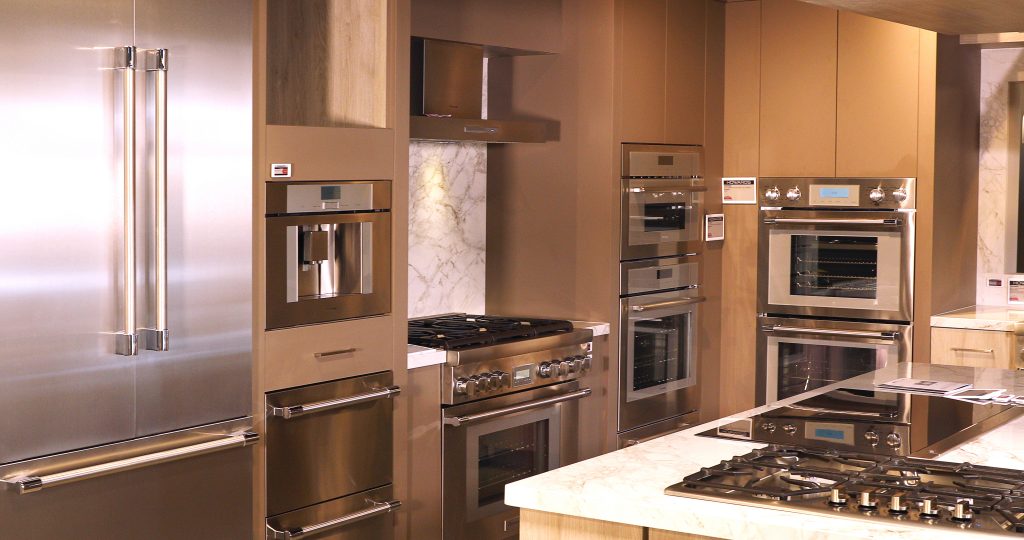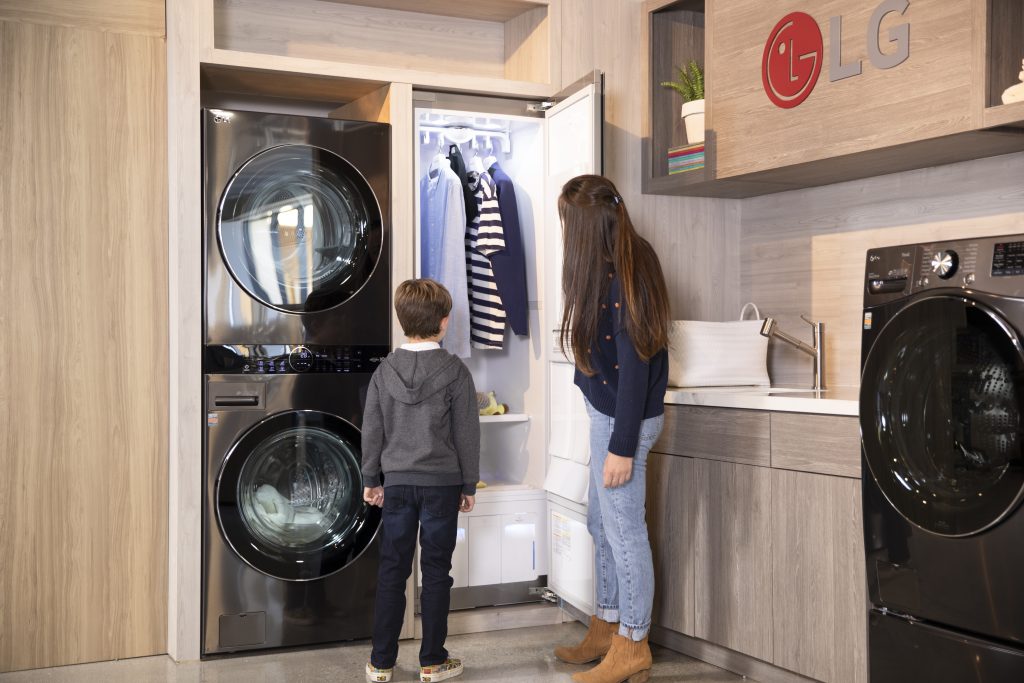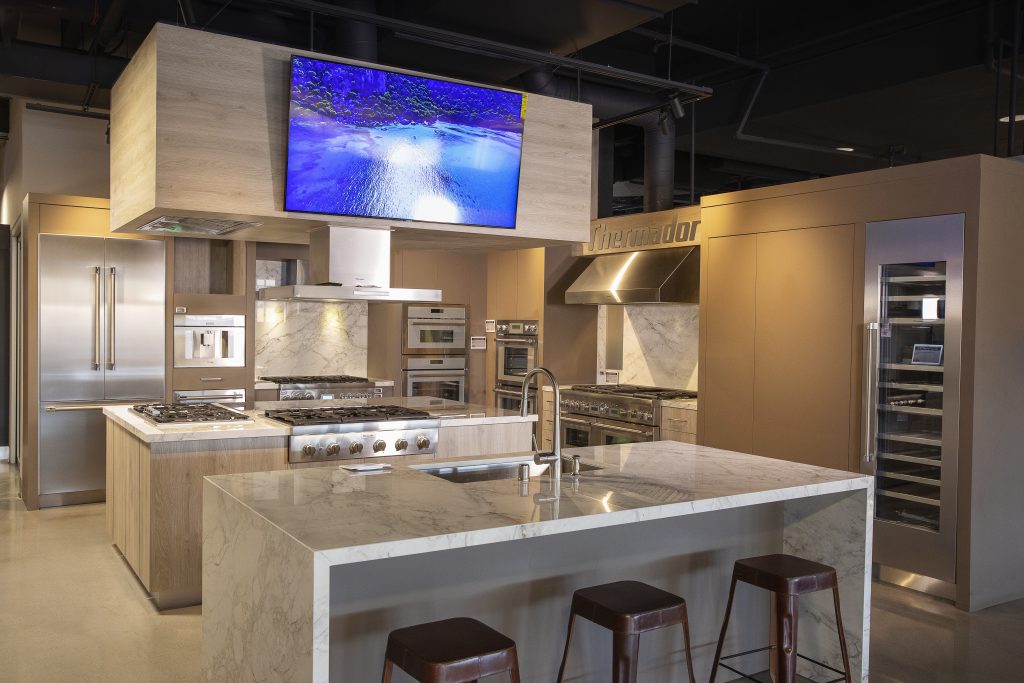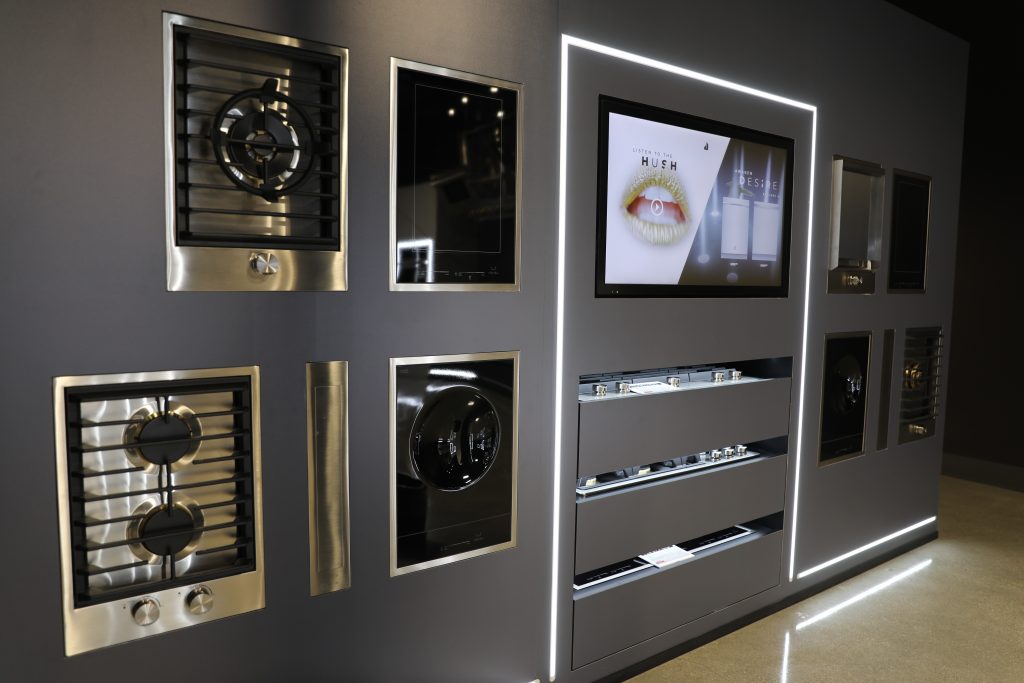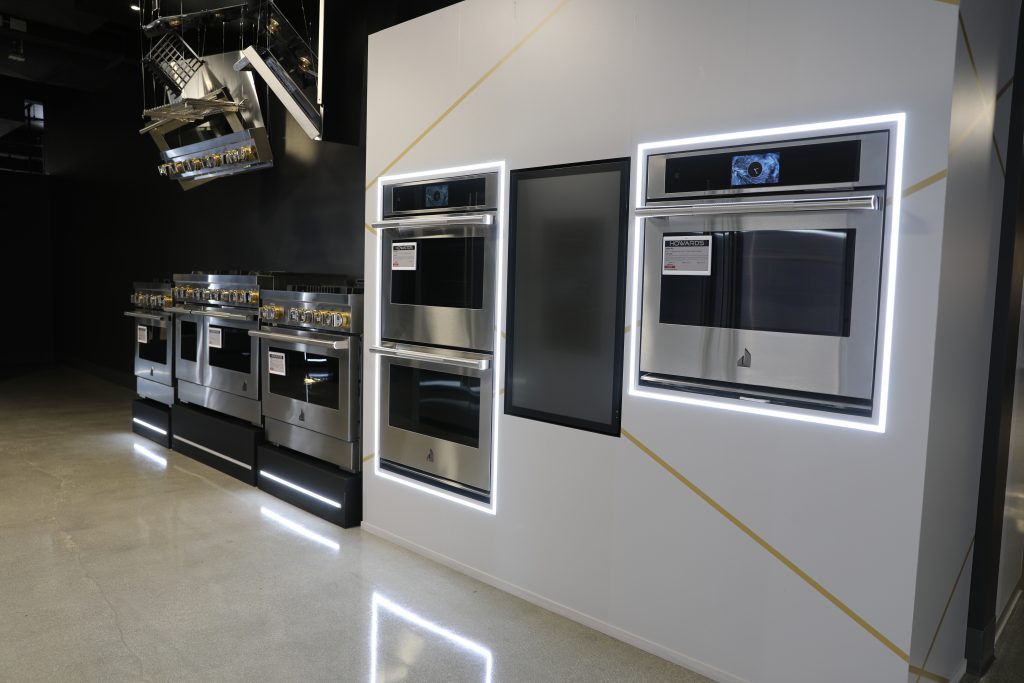What’s the history of Howard’s?
This year marks our 75th anniversary. Our first store was in San Gabriel [Calif.], which our founder, Howard Roach, opened in 1946. We are, I believe, one of the five oldest employee-owned corporations in America. The Howard’s ESOP (Employee Stock Ownership Plan) was formed in 1976 and that means there is no major shareholder; the company is entirely owned by employees.
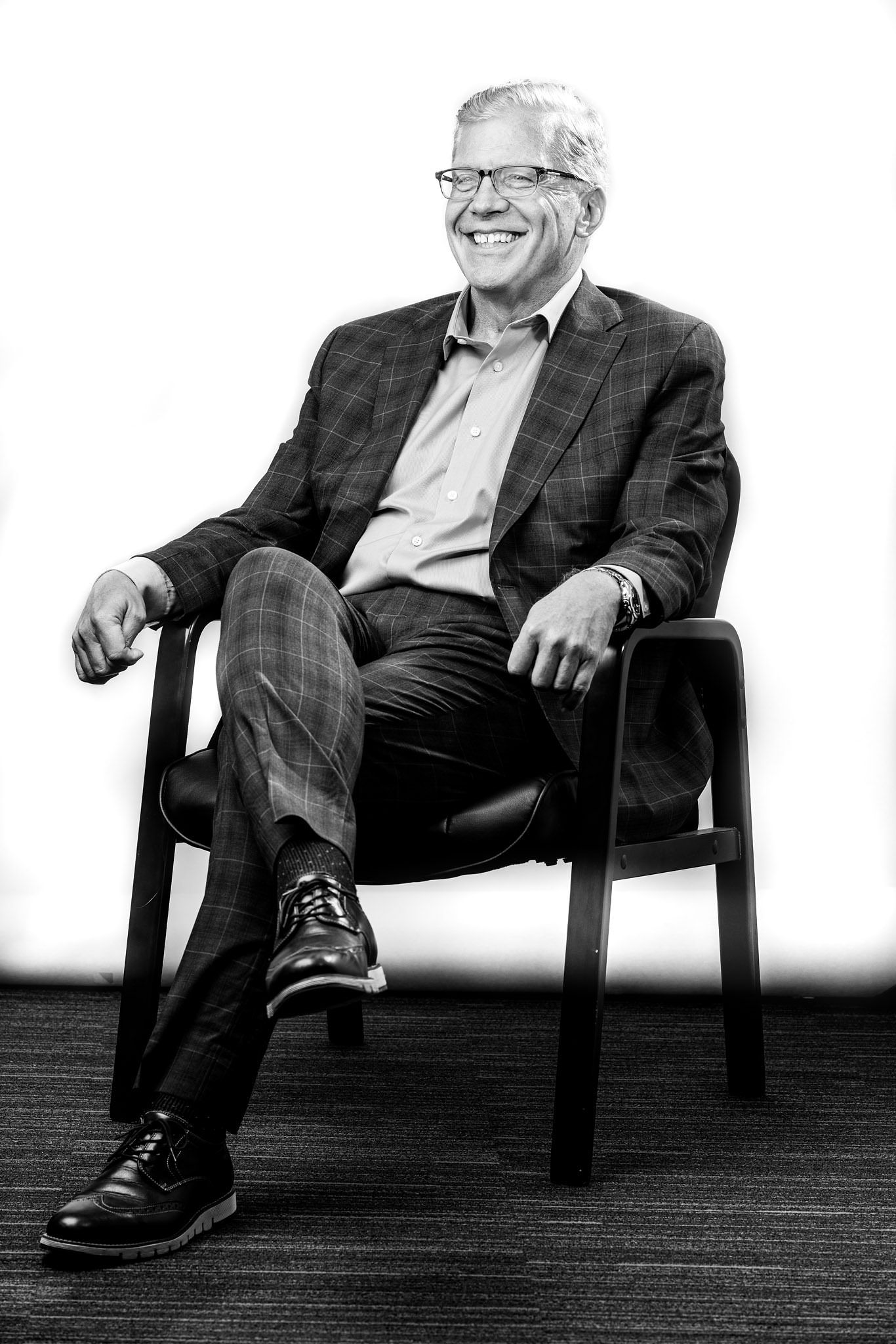
What distinguishes Howard’s from the competition?
The experience center model, which we launched here in Long Beach last September, is distinct. The store is full of different vignettes, or stations, with fully working versions of different appliances. You can come in here and experience any product or see a demonstration. Sort of like Tesla in the automotive space, the idea behind this model is to offer a cool, unique experience that will simplify and enable people to feel comfortable with appliance shopping.
As for the competition, the vast majority of the core products for all these appliance brands are primarily sold through big box retailers. You’re usually in a warehouse club and can’t find someone to help you, and if you do find someone, they’re not going to know very much, or, as at the car dealership, the pitch is on the warranty and there’s a game played on pricing.
And then the other part of the appliance retail business is premium and luxury, and in those stores, you’re made to feel stupid if you don’t have your designer or architect with you to spend two days looking at showerheads. What these stores don’t get is that customers, especially after nesting at home for the past 12 months of a pandemic, are increasingly educated about IoT and pricing and that they really just need to help facilitate the process or get some hands-on with products. So it’s a hassle.
It’s just the opposite of what we’re trying to provide at Howard’s. What we’re doing with this concept of the experience center is having a sales staff that’s not compensated to sell you a particular brand or model but instead has heavy inside-Howard’s training and technology and product education. And then we want the consumer to get comfortable turning stuff on and playing with the technology we have in the store. If you want to try out a gas burner, you can turn on the gas burner. Or you can do your laundry in our new LG WashTower station. It’s kind of like a playground experience, and it’s working—this approach drove a 44 percent comp store increase last year from our business.
We also see a lot of potential, once the pandemic subsides, to do a lot of event marketing related to teaching and education. All of these vignettes are set up with cameras and TV screens, so we can showcase cooking events and that sort of thing.
How many stores do you have?
We have 12 stores throughout Los Angeles, Riverside, San Bernardino, and Orange counties, which is where our headquarters are located in La Habra. We are also opening up a brand-new store at 900 North La Brea Boulevard in September, which is our first foray into that part of Los Angeles. It’s located in a hip little area with coffee bars, restaurants, and mixed-use developments. It’s right on a corner, so we’ll be able to have a vertical sign that’ll be more visible from either direction on the street. There’s a Tartine around the corner, a Sprouts across the street, and a Best Buy about a block away in West Hollywood that’s either the second or third largest in volume in the United States, so we’ll be targeting them. The store is about half the size of our Long Beach store, which is 22,000 square feet, but it’ll also have the same experience center setup. We’ll be incorporating this model into our Huntington Beach location, also in September, as well as in Irvine.
We also have an outlet store, where we sell Class B product, that’s connected to our 172,000-square-foot distribution center in Pico Rivera. Having our distribution center in that location, which is kind of central to all the people living in Southern California, is a huge advantage strategically. Unlike most of our competitors, which have distribution centers in Fontana, Riverside, or other parts of the Inland Empire, we don’t have trucks sitting on the road in traffic for two or three hours. We have the capability to get to someone’s home at a regular hour of the day, rather than knocking on their door at 8 or 9 at night with a delivery.
What about online?
The goal with our dot-com, or website, has always been to have a place where customers can go to experience product and not just to see the pricing of product. That means to see a product working and to be able to compare it to other products, as well as give them options for shopping in-store. So our dot-com is meant to be a support system to give the customer enough information to drive them into the store, but if they want to transact on the website, they can do that. We offer both delivery and curbside pickup. Bringing the customer into the store is important, but ultimately they need to shop the way that they want to shop, so we launched a virtual shopping feature where a customer can set up a one-on-one appointment to have someone with an iPad take them around the store and show them different products. If you want to come into the store, the same offering is available: You can also set up a personalized one-on-one appointment to meet with an expert in-store and get all your questions answered.
Simplifying the process has always been what we’re about. We want to get down to this combination of our website and our brick-and-mortar feeding each other. We work to help facilitate the experiential side of both the website and our brick and mortar.
What are the top three things that the management team at Howard’s has implemented that you attribute to the success of the store?
First off, redefining the experience of the consumer, serving them in a more proactive way and making it easier and more fun for them to try out and discover appliances in our stores. Second, we redirected the key performance indicators of the employees and changed their compensation to focus on the customer’s needs, instead of commissions, or spiffs, around sales. We’ve also changed the metrics around how an employee is evaluated around here — so putting, say, Vinson, on a pedestal for having the most five-star reviews versus for selling $500,000 worth of high-margin items. And I think third is that we’ve launched three different websites in two years. We modernized our web experience to suit Howard’s and leaned into the digital implications that come with that.
What are your goals this year?
From a metrics standpoint, the goals would be to increase from a 3.96 rating on our Yelp and Google reviews to a 4.25 this year. So that’s number one. We also want to try and develop an understanding of a couple of other large markets in California for expansion. San Diego would be on the front end so far, but Northern California offers a lot of positives for us because it’s had more closures of retailers than we have had down here, and also partly because Fry’s was based up there and Pacific Sales closed all their stores up there. So that certainly has a portal, but San Diego is the eighth largest market in the United States and there are no other large regional players down there.
Are you looking to expand in any other ways or sell other categories?
Yes, we’re on our way to expanding into small appliances, including premium small appliances. We want to do more around this idea of urban kitchen design, with built-in coffee makers and the like, but also things that might go on a counter. So, for example, we’re going to work with GE on its Café brand, which has a new line of small appliances — a coffee maker and a toaster — that are colorful and chic, with a unique kind of design that I think is really cool. But we’ll also work with KitchenAid and other brands on juicers, mixers, and those kinds of products.
Is there anything in the building of your business that did not go with the way you expected, and that you learned from?
Well, just trying to get permits to build this store, for example. This is Long Beach, but over the past 12 months it’s been tough in any city to get permits, set up inspections, or all the other stuff you need to do with electrical and other building codes — particularly with this experience center, which used to be a Sports Authority. Besides all the working appliances, we’re doing live displays, all of which are interactive. This led and continues to lead to huge delays. The redesign of our Huntington Beach store was supposed to be done by now, but we’ve pushed it back to September.
The pandemic slowed other things as well. We’re moving $8 million to $11 million a month out of our distribution center. When you have that kind of volume, it’s important to have a workforce that can stay healthy and safe. There are probably 270 to 280 people — both employees and contractors — who work every day around Howard’s, but last year, we had only four cases of COVID. We all wear masks. Our drivers are going into people’s homes, so if we get feedback that they took off their mask, or their gloves or whatever, then they go into a three-day off period with a tutorial training.
Is there something unique about what you offer or how you do retail?
Besides the experience center model, we focus on customer service. We have a full-time customer service staff. They operate the same hours as the stores, which are open seven days a week. They’re there to do whatever is necessary, including something we started in the spring of 2019 when I came here.
My family had an appliance store when I was growing up. One thing I remember is that whenever a customer called and their refrigerator was out, or something happened with their washer, I’d go with my Dad to the store and we would pull a product out of inventory. Then we’d put it on a truck and deliver it to that customer so that they had something to use until we got a technician out to their house. And so now at Howard’s, we have a loaner program, which is free of charge, for those scenarios. As long as you’ve bought something from us, or you’re in a current purchasing mode, you’re eligible for the program.
What’s your favorite corner of the store?
I particularly like the Jenn Air experience center. It’s designed with an element of art to showcase product, because product is king for the consumer. I also believe that retail should be interactive, so you should be able to use technology to look for different things that you want to showcase that maybe aren’t here. So there are interactive screens all around. Getting people to think outside the box around product that also combines technology: I like that sort of mix.
How does Dealerscope help you in your everyday business?
The usual stuff – staying up to speed with news about vendors and other retailers. A friend of mine who ran a company in Utah was away on a three-year missionary trip with his wife in Sacramento. He just recently came back as CEO of the business and I didn’t even know that until I saw it in Dealerscope. So, you know, those sorts of updates and news you would get from a newspaper, magazine, or website.








